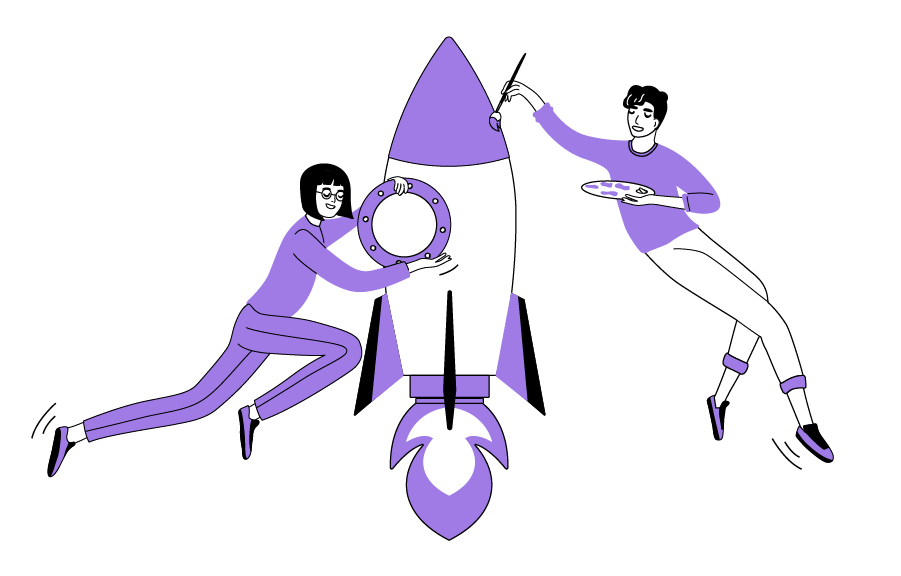This article was written by Jean-Vincent Delli Zotti with the collaboration of Aurelie Wen.
From employee challenges to student competitions and hackathons, open innovation challenges are more popular than ever. They are a great way of fostering innovative ideas, attracting talents, and retaining skilled employees.
While launching an open-innovation challenge is a fantastic idea, launching a successful one is not always that easy. There are numerous pitfalls to avoid and this initiative can easily turn into a bad buzz.
We got you covered!
After organizing over 800 open-innovation challenges since 2011, we have identified the major mistakes you can make while organizing your competition. Here are the top 9 ways you could ruin your open-innovation challenge:
#1 Launching a challenge just for the sake of it
Launching an open-innovation challenge just because others are doing it is a great way of ensuring it’s going to be a bust. Participants are not stupid and will understand that your challenge is just a publicity stunt.
Before doing anything, ask yourself the following questions:
- What are your objectives?
- What is the audience you want to target?
- What are the problems to solve?
- What technologies will be involved in the challenge?
Once you have answered those questions, it should be much easier to start planning your challenge and avoid mistakes!
Take a look at our open innovation platform
#2 Figuring out the rules of the challenge as you go
Figuring out or changing the rules of a challenge that is already launched can scare off a lot of participants. Establishing clear rules and expectations from the get-go will keep participants confident about their chance of winning and the seriousness of the competition.
You should be as transparent as possible when it comes to:
- The expected deliverables
- The judging criteria
- The timeline of the challenge
- The rules regarding intellectual property
#3 Relying solely on your brand to attract participants
Don’t get fooled, even if your brand is well-known by your target audience, attracting participants to your challenge requires a lot of effort. It takes a village to build engagement, so be sure to have the manpower and the budget needed! Those are some of the initiatives you can take to make sure your challenge has a healthy number of participants:
- E-mailing and cold-calling campaigns
- Creating partnerships with universities, incubators, tech hubs and associations who have a reach to your target audience
- Spreading information on the challenge through social media and PR
- Running online ads on websites used by your target audience
- Organizing live presentations and workshops to convert curious people into participants
#4 Setting a high barrier to entry
It’s alright to try and attract only the best participants to your open innovation challenge but raising the barrier to entry might just end up hurting the number of participants as well as their qualification. People can get scared off by a very demanding first participation requirement and just not go through with it. Here is some advice to boost your participation rate without sacrificing the quality of participation:
- Open the registration to other kinds of profiles, even if they are not experts in the area of the challenge.
- Have the broadest possible geographical scope, do not limit yourself to your city or state. Instead, aim at opening the challenge to the whole country or, even better, go worldwide. After all, the best ideas can come from anywhere!
- Gradually increase the complexity of the deliverables. This way, anyone interested will be able to join but you will filter out the best ideas and participants through several voting steps.
#5 Keeping the IP to yourself
I get it. It’s tempting to keep all those great ideas for yourself. But, by doing so, you might discourage the best talents from joining your challenge. It’s good to know what your options are just so you know what fits best for you:
- IP remains with participants – in this case, participants keep the full property of their idea. This is perfect to attract a maximum of participants. If you want to develop the solution in-house, just hire the winners!
- IP shared with you – in this case, the IP is shared between you and the participants. You can use it as long as you mention the creator and the creator can still sell it to someone else or create a company around it.
- Exclusive purchase of rights – in this case, the IP is exclusively yours. This might hurt your participation number but you can balance it by offering a very attractive reward to the winners.
- Internal challenges – in the case of an employee challenge, the IP is always yours as the participants will exclusively be part of your company.
#6 Picking the wrong judges and mentors
Selecting the right judges and mentors is an essential part of the success of your open-innovation challenge. They are going to fine-tune and select the best projects of your challenge so you better get the right mix of profiles!
Too many dreamers and you will only get far-fetched projects that won’t be easily implemented; too many realists and you won’t get any truly innovative projects. Finding the right balance is key so make sure you have the following profiles:
- Dreamers
- Realists
- Analysts
#7 Making it all about the competition
An open-innovation challenge is indeed a competition but it’s not the only motive behind participation. Most participants are looking for a lot more things than simply competing against other innovators. Participants are usually looking for:
- An opportunity to grow (learn new skills, apply their knowledge to a real-world case…)
- Meeting inspiring people and building their professional network (mentors, participants, and judges)
- Solving issues and changing the world
- Rewards (money, perks, opportunities)
Make sure to offer all of those to attract participants, build engagement, and give your participants the best possible experience!
#8 Offering unfit prizes
The prizes and rewards you will offer to winning teams heavily impact the number and type of participants you will attract.
While students might be interested in a cash prize, job opportunities or a trip around the world, start-ups are looking for exposure, recognition, funding, and contracts. Be sure to offer the right prizes to attract your target audience! Offering prizes that are too small can also hurt your number of participants. You should offer at least $10,000 to the first team!
To help you, here is a quick list of some of the prizes you can offer:
- Cash prizes
- Perks (experiences, recognition, devices)
- Job and partnership opportunities
- Trips or tickets to an event
#9 Neglecting the timing
Organizing an open-innovation challenge is no easy feat and you should not underestimate the time you will need to make it a success! You should anticipate at least 4 weeks of preparation time and 8 weeks to generate participation and engagement.
The timing is also crucial to ensure that participants register and keep engaged in the challenge. For instance, if you are targeting students you should follow the university calendar of the respective regions. Organizing a challenge during summer break or planning a key submission deadline during an exam period is going to impact participation negatively.
To sum up:
- Stay as open as possible when it comes to participants’ profiles
- Know your objectives: topics, participants, scope…
- Be organized and establish clear rules before the launch
- Take timing into account: 4 weeks to prepare, 8 weeks to promote
- Be generous with intellectual property
- Set the right rewards for the right target
What is Agorize?
Agorize is the most comprehensive innovation management platform, supported by a team of experts and community of innovators. For over a decade, we’ve been providing technology powered by a community of 5 million innovators to foster change and accelerate innovation. Our clients and partners worldwide crowdsource, evaluate and develop solutions from startups, employees, developers and students using Agorize. We’ve helped over 300 global enterprise companies in Europe, North America, and Asia Pacific, including Enterprise Singapore, Huawei, Microsoft, LVMH, PepsiCo, Bayer, Schneider Electric, Hitachi, L’Oréal and many more by running their innovation programs.
What is an innovation challenge?
An innovation challenge, or innovation competition, is a competition organized by a company to bring forward innovative solutions. The organizer defines clear objectives and problem statements, after which innovators are invited to submit their ideas and solutions. Proposals can come from startups, employees, students or other talent that is relevant to the topic at hand.
Through a process of crowdsourcing and assessing ideas, mentoring participants and developing solutions, the organization will identify the winning proposals that will be implemented. More than 300 enterprise companies have organized innovation challenges with Agorize.
Their results speak for themselves. They’ve reduced go-to-market time with internal teams, fast-tracked the development of niche solutions with the products and services of startups, created long-term strategic partnerships and brainstormed future-proof ideas with students from top universities. Overall, it accelerated their own transformation and made themselves more future-proof.











